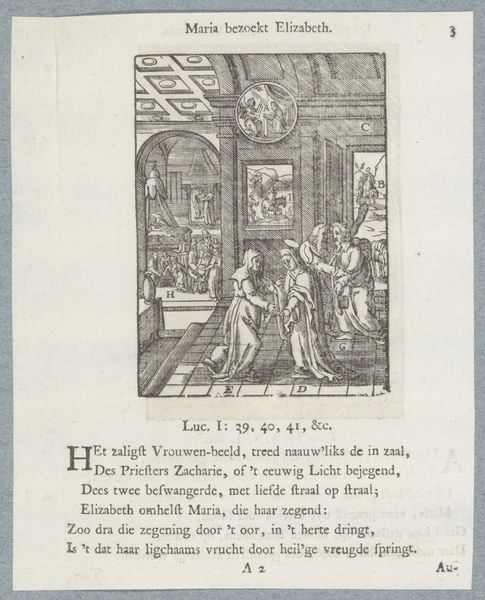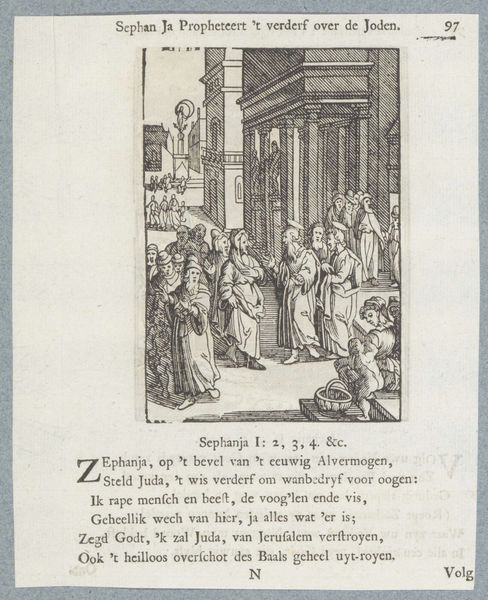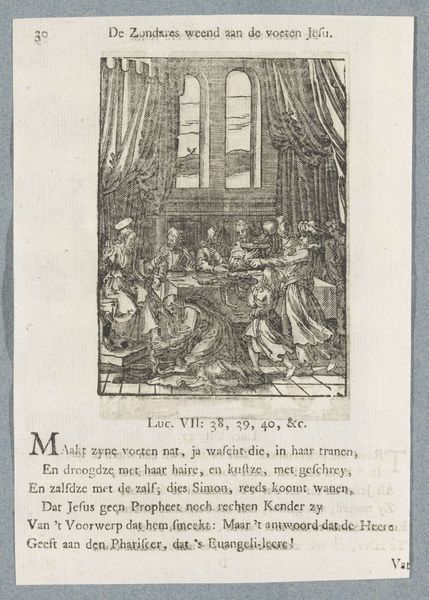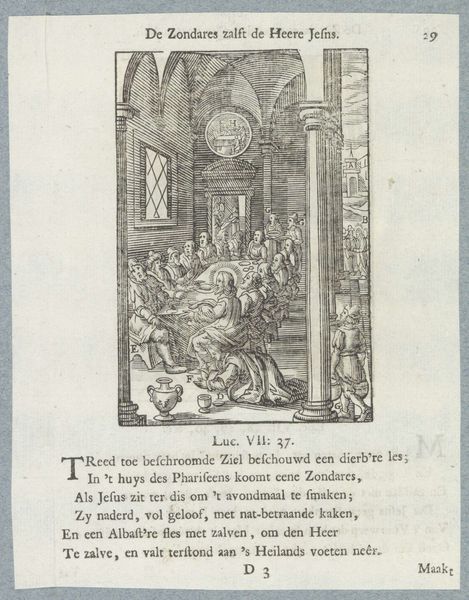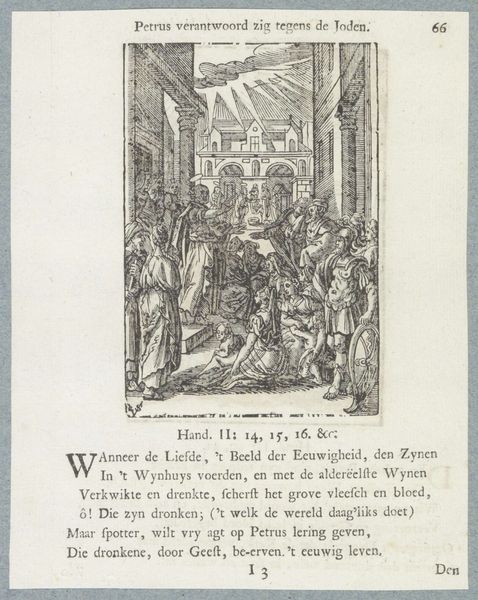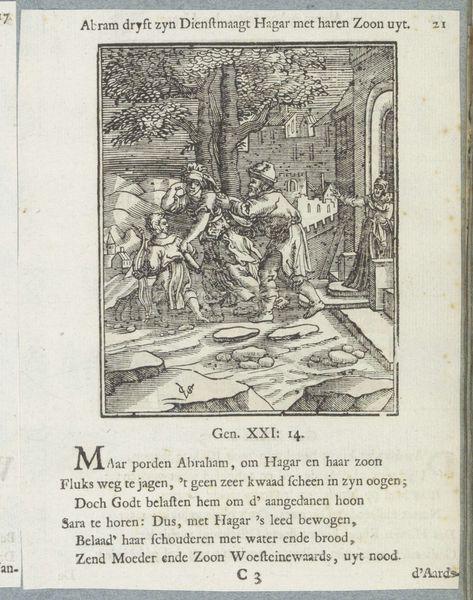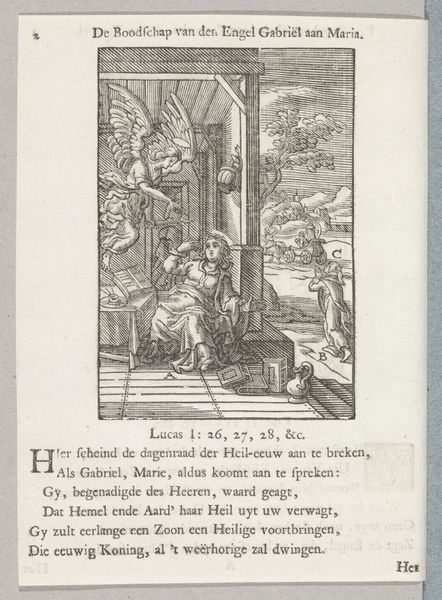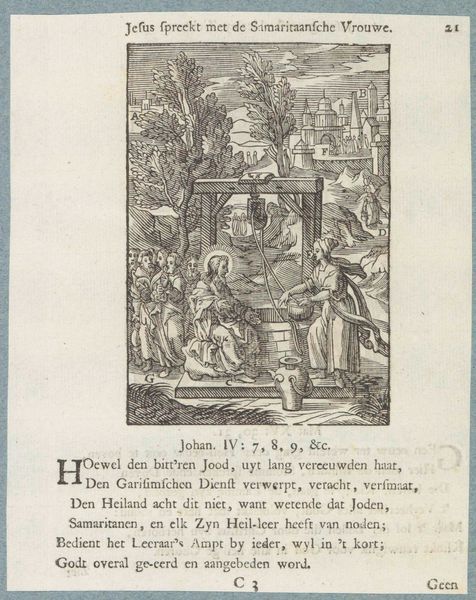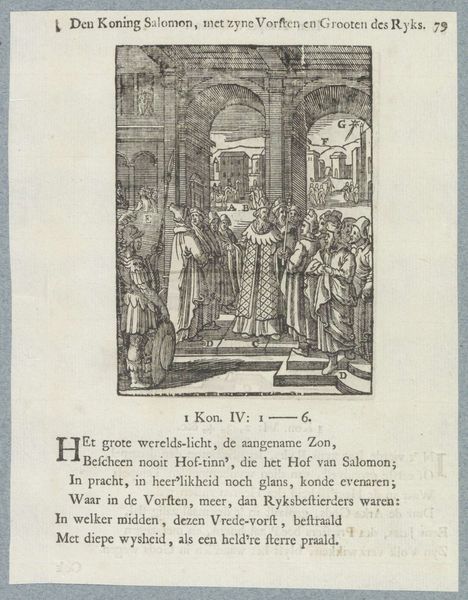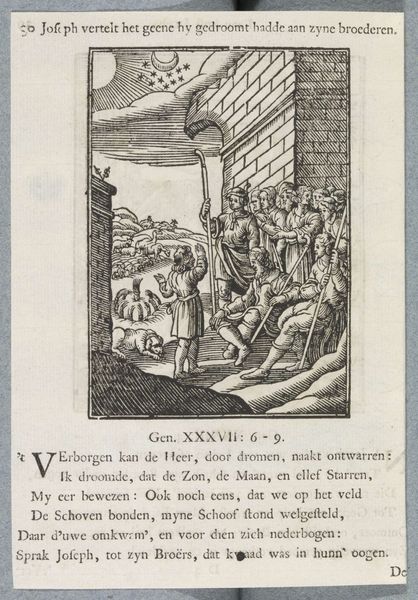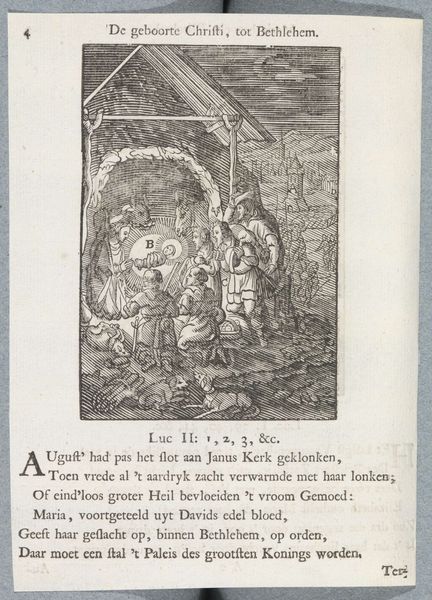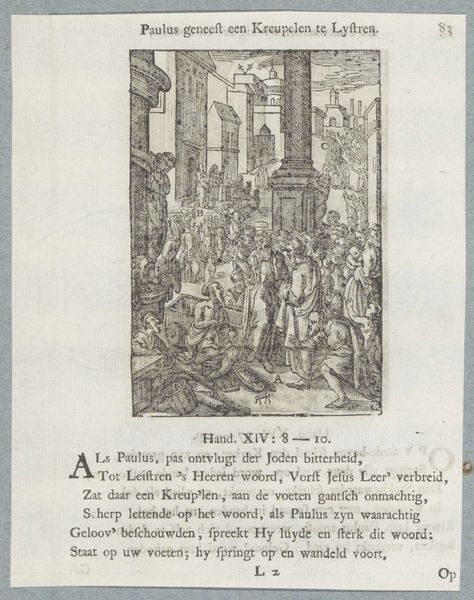
print, engraving
#
narrative-art
#
baroque
# print
#
figuration
#
line
#
engraving
Dimensions: height 104 mm, width 75 mm, height 172 mm, width 136 mm
Copyright: Rijks Museum: Open Domain
Curator: This print, titled "Terugkeer van de Verloren Zoon" or "Return of the Prodigal Son", comes from the period of 1629 to 1740, attributed to Christoffel van (II) Sichem. It's held here at the Rijksmuseum. What strikes you most about it? Editor: Immediately, the stark contrast grabs my attention. The high detail in the figures set against a relatively simple background really pushes forward this idea of repentance and desperation in the foreground. You can almost feel the harsh texture of the engraving! Curator: Absolutely, and note the deliberate use of line. Sichem evokes a lineage of northern European masters of engraving, artists steeped in biblical illustration. The subject is the prodigal son's return—a classic narrative in art. The emotional weight, wouldn’t you say, relies on this pre-established visual and psychological narrative to stir feelings of empathy and forgiveness. Editor: It’s fascinating how printmaking at this time made religious narratives more accessible. Considering its production, engraving demanded rigorous skill, requiring specialized tools. And the relative simplicity, almost bareness, perhaps speaks to an intention: it mirrors the prodigal son’s state after squandering his wealth. Curator: A superb observation. And, in terms of visual symbols, notice the specific moment Sichem has captured. It’s not merely the embrace, but the very moment of kneeling, the acknowledgement of error. The posture, deeply embedded in cultural memory, triggers recognition and perhaps self-reflection within the viewer. Editor: Exactly, we tend to think of ‘art’ as a self-contained aesthetic event but, if you examine the mode of production itself—the craft—the act of distribution through print, the social context comes alive again. You can imagine these images in private devotional books, mediating religious experience, the making and consumption intrinsically intertwined. Curator: It certainly provided an intimacy with faith and narratives. What begins as visual experience becomes embedded as cultural meaning over time. This print then operates within a complex web of faith, memory, and redemption. Editor: Indeed, from a straightforward means of production to its life mediating experiences and devotion. Fascinating how it all interlocks, isn’t it?
Comments
No comments
Be the first to comment and join the conversation on the ultimate creative platform.
